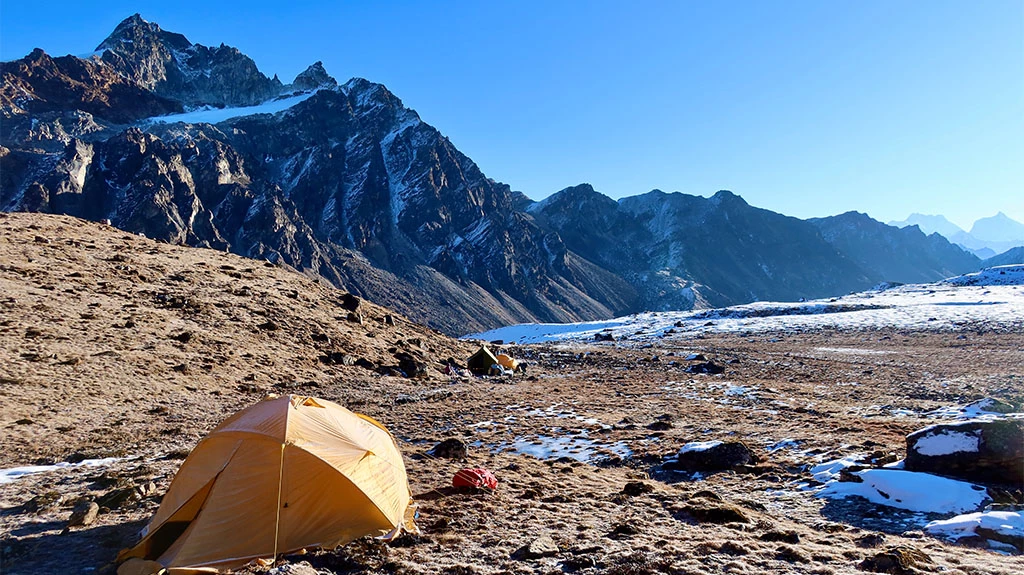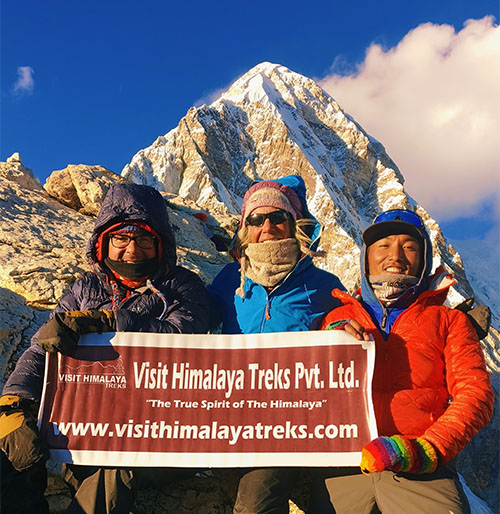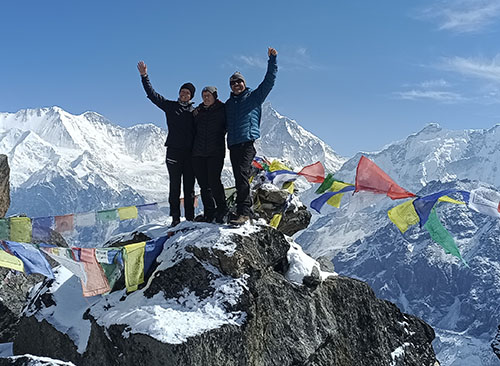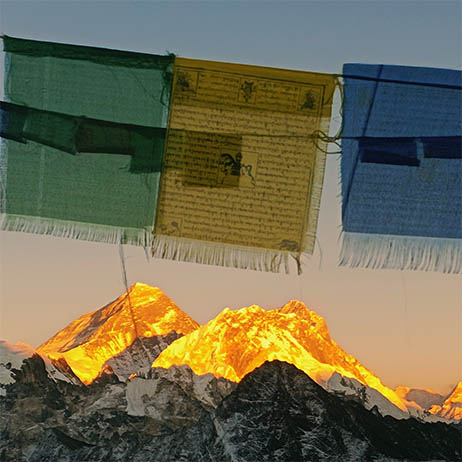Find out why the Lumba Sumba Pass Trekking in Nepal is a must-do for every traveler who loves an unforgettable journey through a remote paradise.
In a trekking paradise like Nepal, hikers are often presented with a wide range of options, including stunning Himalayan landscapes, unique remoteness, hidden cultural experiences, and more.
Where is the Lumba Sumba Pass Trek Located?
The Lumba Sumpa Pass is situated between the two eight-thousand-meter peaks, Mount Kanchenjunga to the east and Mount Makalu to the west.
Trekking to Lumba Sumba Pass connects the world's 3rd highest peak, Mount Kanchenjunga with a height of 8,586 meters (28,169 ft) on the eastern border of Nepal and India (Sikkim), and Mount Makalu, the fifth highest peak of the world with a height of 8,485 meters (27,838 ft), standing in the Mahalangur Himalayas range just 19 km southeast of Mount Everest on the Nepal and China border through the Upper Great Himalayan route.
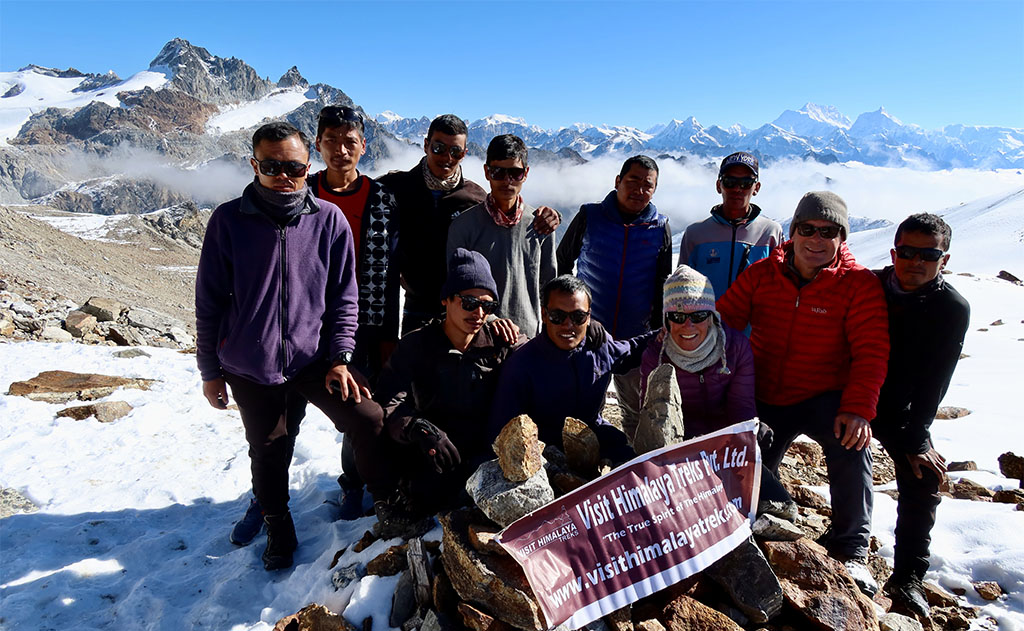
Visit Himalaya Treks team at Lumba Sumba Pass 5177 meters.
Why is the Lumba Sumba Pass Trek so Unique?
It can be challenging to find information about eco-friendly, off-the-beaten-path trekking holidays in the Himalayas of Nepal. Such remote and pristine wilderness trekking details are not as readily available as information about popular trekking destinations." However, Lumba Sumba Pass Trek is the perfect option who love Nature, an unspoiled remote destination to experience real authentic trekking experience.
Trekking to Lumba Sumba Pass requires full camping arrangements because there are no tea houses or lodges along the route except in Olangchung Gola Village. Camping treks provide a genuine trekking experience with supporting teams and are the best way to enjoy an authentic trekking holiday in the Himalayas of Nepal. Lumba Sumba Pass Trek is a part of the Upper Great Himalayan Trail route that connects Kanchenjunga Base Camp Trek and Makalu Base Camp Trek.
Away from the modern city, the Lumba Sumba Pass trek offers peaceful environments, attractive landscapes, and serene Himalayan peaks that make this trekking destination so unique.
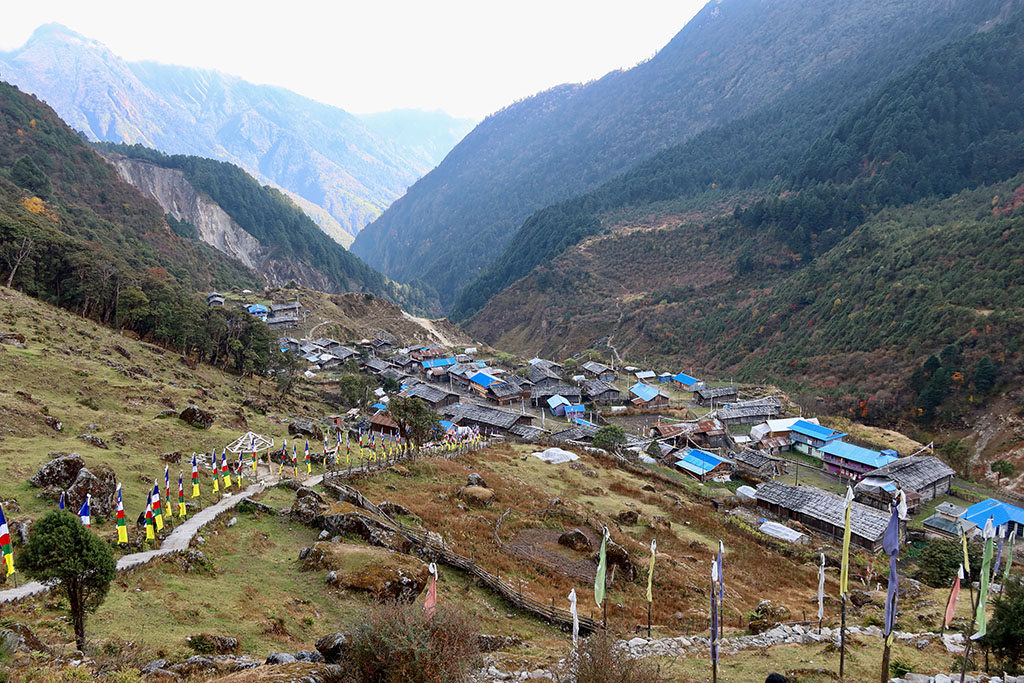
Traditional Old Sherpa Village Olangchung Gola.
Traditional old Sherpa village Olangchung Gola Village.
The Lumba Sumba Pass trekking route provides a great opportunity to explore the typical Sherpa village of Olangchung Gola, which is located to the north of the Tamor River in the Taplejung District, bordering Tibet in the Kanchenjunga Conservation Area. The Lumba Sumba Pass, at 5177 meters, marks the boundary between the Taplejung and SankhuwaSava districts.
Olangchung Gola village is the last village before crossing the Lumba Sumba Pass to the west another remote village of Thudam. Olangchung Gola village is situated in the Taplejung district and Thudam village is located in Sankkhuwasava district. Peoples from the Olangchung Gola are indigenous inhabitants of the region around Olangchung Gola they are descended from the Tibetan traders and practice Nyingmapa Buddhism. Deki Chholing Gompa is one of the oldest Nyingmapa Buddhist monasteries built 450 years ago and located at the top of the Olangchung Gola Village. According to the 2011 Nepal census 239 peoples live in 62 different individual households in Olangchung Gola.
Kumbakarna Himal (Janu Himal View) from Lumba Sumba.
During the Lumba Sumba Pass Trekking, the Lumba Sumba Pass, at 5177 meters (16,982 feet), is the highest point we will reach during our trek. From the top of the pass, breathtaking Himalayan views can be observed. In the east, Mt Janu Himal, also known as Kumbakarna Himal, rises to 7,710 meters (25,295 feet). It is one of the most attractive mountains and is the 32nd-highest peak in the world. Mt. Kumbakarna Himal is part of the Kangchenjunga Massif and was first climbed on April 27, 1962, by a French team led by Lionel Terry, Rene Desmaison, Paul Keller, Robert Paragot, and Gyalzen Mitchung Sherpa.
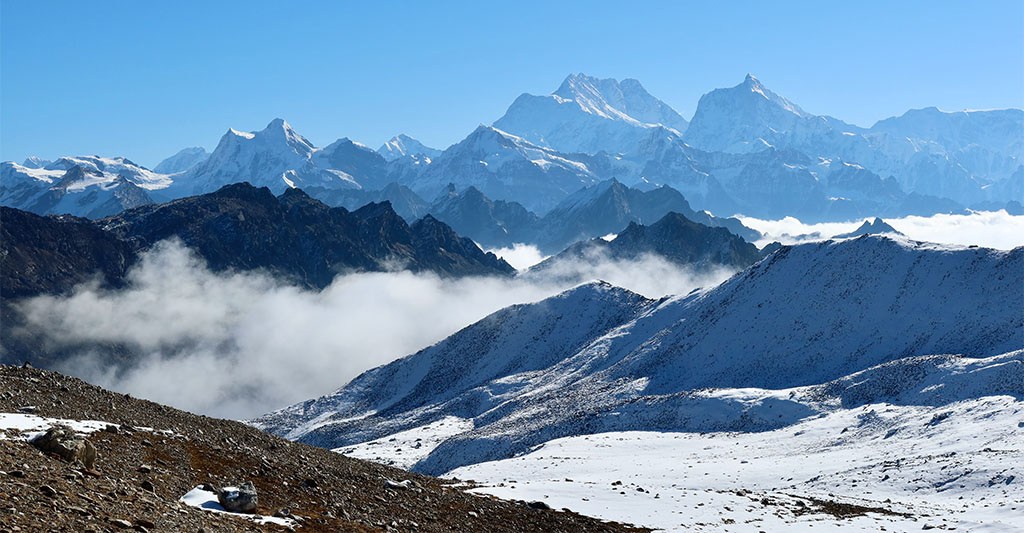
Mount Janu and Kanchenjunga View from Lumba Sumba Pass Top.
Mt. Kanchenjunga View from Lumba Sumba top.
On a clear day, the world's third tallest peak, Kanchenjunga (8,586 meters or 28,169 feet), along with its South (8,476 meters) and Central (8,482 meters) peaks can be seen from the Lumba Sumba Pass. In addition to Kanchenjunga and Kumbakarna Himal, other visible peaks include Sobi Thongie (6,670 meters) and Kanbachen Peak (7,080 meters), as well as many unnamed Himalayan peaks. Mount Kanchenjunga was first climbed on May 25, 1955, by Joe Brown and George Band as part of the British Kanchenjunga Expedition.
Taking in the breathtaking views of the Himalayan Peaks, Hills, and Valleys from the east belt of Lumba Sumba Pass is the highlight of the trip. You will be able to enjoy this stunning scenery from the top of the pass. Don't miss the opportunity to capture these unforgettable moments with photos that will create memories for a lifetime.
Mt. Makalu View from top of Lumba Sumba Pass.
After enjoying the views from the East, turn your eyes to the southwest direction, where you will see Mt. Makalu, the fifth-highest peak in the world. Mt. Makalu is located in the Mahalangur Himalayas range, just 19 km southeast of Mount Everest, in the Makalu Barun National Park. It was first climbed by an American team led by Riley Keegan, Bill Long, and Allen Steck from the Southeast Ridge in the spring of 1954. This is a fantastic location where we can admire Mount Kanchenjunga to the east and Mount Makalu to the southwest.
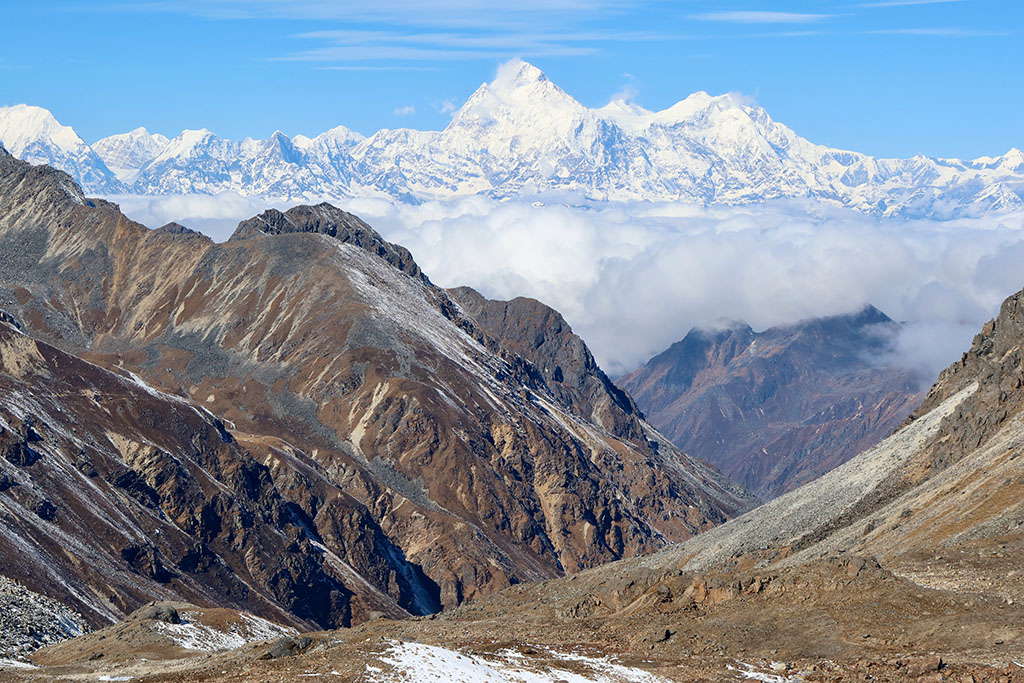
Mount Makalu View from Lumba sumba Pass.
Lumba Sumba Pass Trekking Route.
Your journey began in the capital city of Kathmandu, where you took a 40-minute flight to Bhadrapur, located in eastern Nepal near the border with Sikkim, India. After landing in Bhadrapur, your journey continued with an overland tour to the Taplejung district, passing through the beautiful areas of Ilam and Kanyam.
Ilam and Kanyam are popular tea-producing areas in Nepal. They feature beautiful tea gardens with stunning views of the Kanchenjunga mountains. The overland journey passes through the hilly region towards Lelep, via Taplejung, Mitlung, and Chhiruwa. The actual Lumba Sumba Trekking adventure begins from here."
Our 13-day trekking journey will take us from Lelep to the Lumba Sumba Pass. We will trek through the following locations: Iladanda, Selap Kharka, Olangchun Gola, Langmale Kharka, Yangetar, Pass Camp, Lumba Sumba Pass, Yak Kharka, Thudam, Chyamtang, Hatiya, Gola, Hedanga Gadi, and Num before ending our journey back in Tumlingtar.
We will celebrate a fantastic evening with our team. It is usually the best way to conclude our wonderful journey.
Possibilities side trip on Lumba Sumba Pass. (Yangma Valley)
This trek can be extended to Yangma Valley, which is located north of Olangchun Gola Village. Yangma Valley and Yangma Village are very remote local villages. It is an unbelievable human settlement with only about 10 to 12 households in this remote place.
This trading route follows the Yangma Khola, Yangma Village, and ChheChe Pokhari, and connects to Tibet Rongxar. Extending this side trip will require an additional 4 to 5 days.
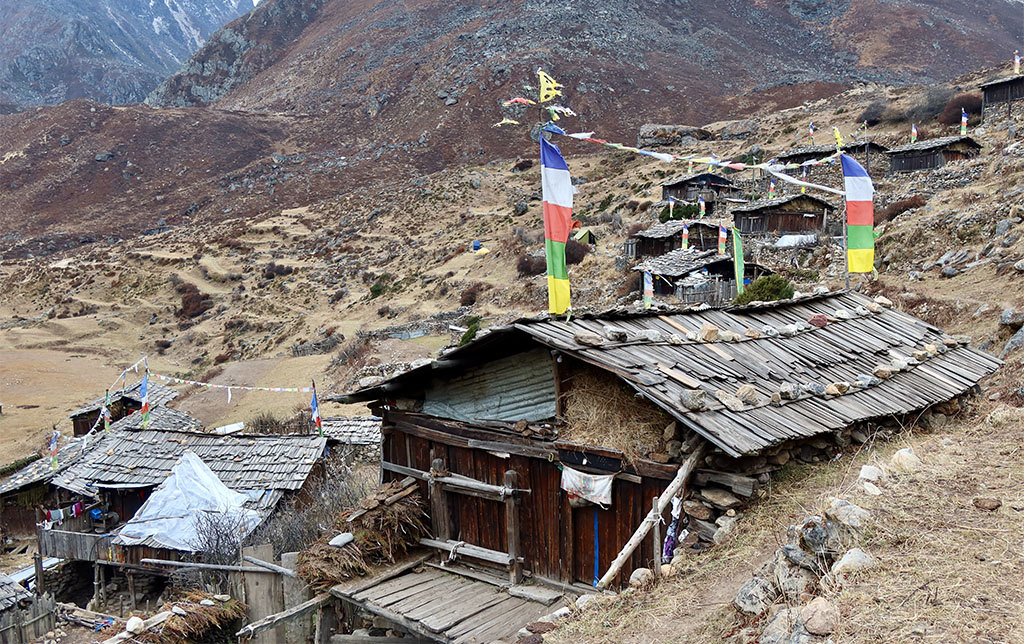
Remote Yangma Village in Upper Kanchenjunga Region of Nepal.
It is Possible to trek Lumba Sumba Pass Tea House, Lodge Trek?
The Lumba Sumba Pass, nestled between the majestic Kanchenjunga and Makalu mountains, is a truly remote and extraordinary adventure travel destination. This wilderness trekking route offers a unique experience as there are no tea houses or lodges available along the way, adding to the raw and untamed nature of the journey.
Camping Trekking to Lumba Sumba Pass.
When trekking in remote and unique destinations, proper preparation and operation are key factors to completing the journey. These pure off-the-beaten-path locations require full camping arrangements. Visit Himalaya Treks specializes in remote and pure off-the-beaten tracks such as Lumba Sumba Pass Trek, Makalu Base Camp Trek, Kanchenjunga Base Camp Trek, and Upper Dolpo Trek.
Camping treks are much more challenging than well-established destinations such as the Everest Base Camp Trek or the Annapurna Base Camp Trek. When operating camping treks in Nepal, having an experienced guide, a strong support team, and high-quality gear is crucial. Visit Himalaya Treks has extensive experience in operating remote and wilderness camping treks in Nepal." We have achieved a great record with a successful 42-day operation following the Upper Great Himalayan Trail route, from Rara Lake to Upper Dolpo to Jomsom at least 3 times western section of the Great Himalayan Trail.
Similarly, we have successfully completed the 48-day Eastern Section of the Great Himalayan Trail high route via Kanchenjunga South and North Base Camp, Yangma Valley, over Nango La Pass, Lumba Sumba Pass, Molum Pokhari, Kalo Pokhari, and Makalu Base Camp more than three times.
All these high Passes adventures are a lifetime travel experience in the high Himalayan region of Nepal you will experience in your life.
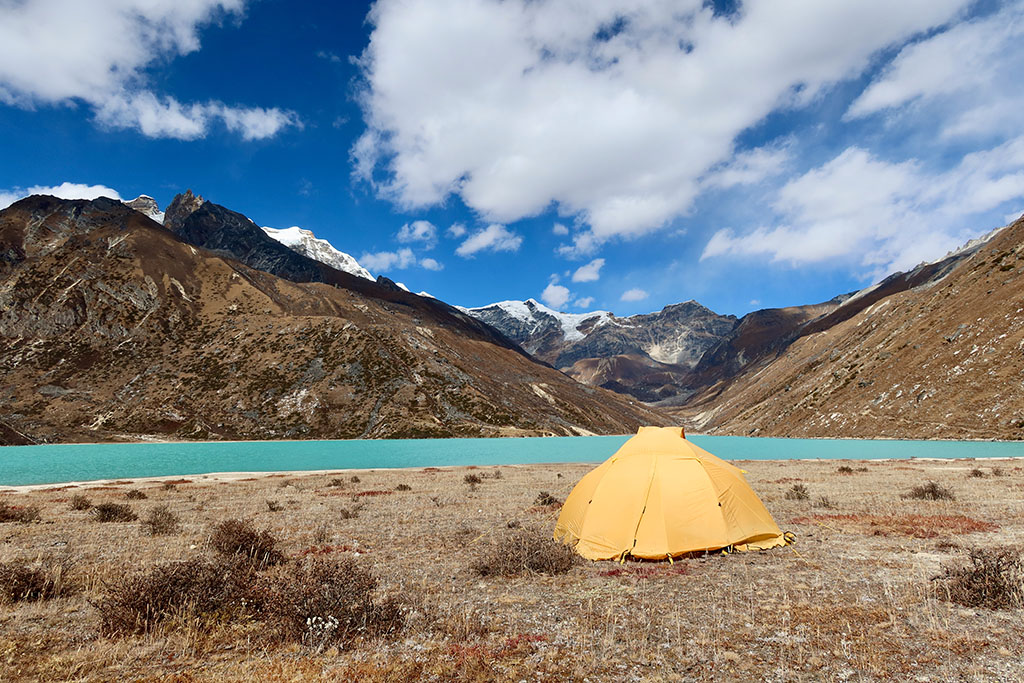
Our Camping at CheChe Pokhari Upper Yangma Valley.
How difficult is the Lumba Sumba Trek?
As per the trekking destination and the duration of the trekking days, we categorize trekking difficulty levels accordingly.
- Easy grade Treks.
- Moderate grade Treks.
- Demanding grade Treks.
- Extreme grade Treks.
The Lumba Sumba Pass Trek, organized by Visit Himalaya Treks, is a Demanding grade two-week full camping trek. Trekkers will spend over a week at high altitudes above 3500 meters. The trek includes crossing a 5177-meter pass, requiring a minimum of 4 hours and a maximum of 8-9 hours of walking uphill and downhill in the Himalayan terrain. It covers remote valleys, moraines, loose rock tracks, and the 5177-meter-high pass.
All this information points difficulty level of the Lumba Sumba Pass Trek without doubt demanding grade treks in Nepal.
When is the Best Time to Trek Lumba Sumba Trek?
Remember to consider the ideal time for your travel to make your journey more memorable and enjoyable. Clear days are essential for enjoying the beautiful Himalayan panorama, especially during high Himalayan treks in Nepal. Nepal has two main trekking seasons for Himalayan treks: autumn and spring.
The best time to trek the Lumba Sumba trail is during the autumn season, from October to mid-December. This time of year offers clear views of the Himalayas as the monsoon season has just ended. Another ideal time for the trek is during the spring season, from March to the end of May. During this time, the blooming rhododendrons, also known as Lali Guras, add to the attraction of the trek, especially in the lower elevations along the route.
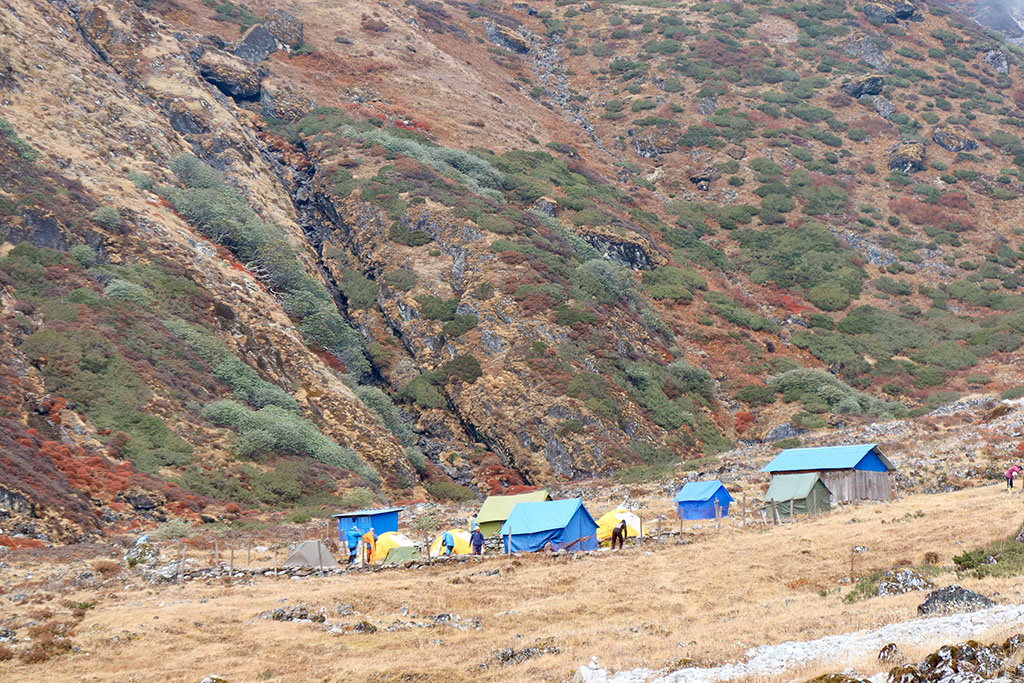
Camping in the Remote area while on Trekking in Lumba Sumba Pass Trek.
Lumba Sumba Pass Trekking summary,
Lumba Sumba Pass trek is a remote and off-the-beaten-path trekking destination in eastern Nepal. Visit Himalaya Treks offers an 18-day Lumba Sumba Pass Trekking Package that starts and ends in Kathmandu. This trek is a wonderful opportunity to explore the less-visited and remote corners of eastern Nepal between two 8000 peaks.
For those who love real adventure, it is possible to combine the Lumba Sumba Pass trek with Kanchenjunga South and North Base Camp, Yangma Valley, and even Mount Makalu Base Camp Trek. You can find more information about the 18-day Lumba Sumba Pass Trekking package on this page.

